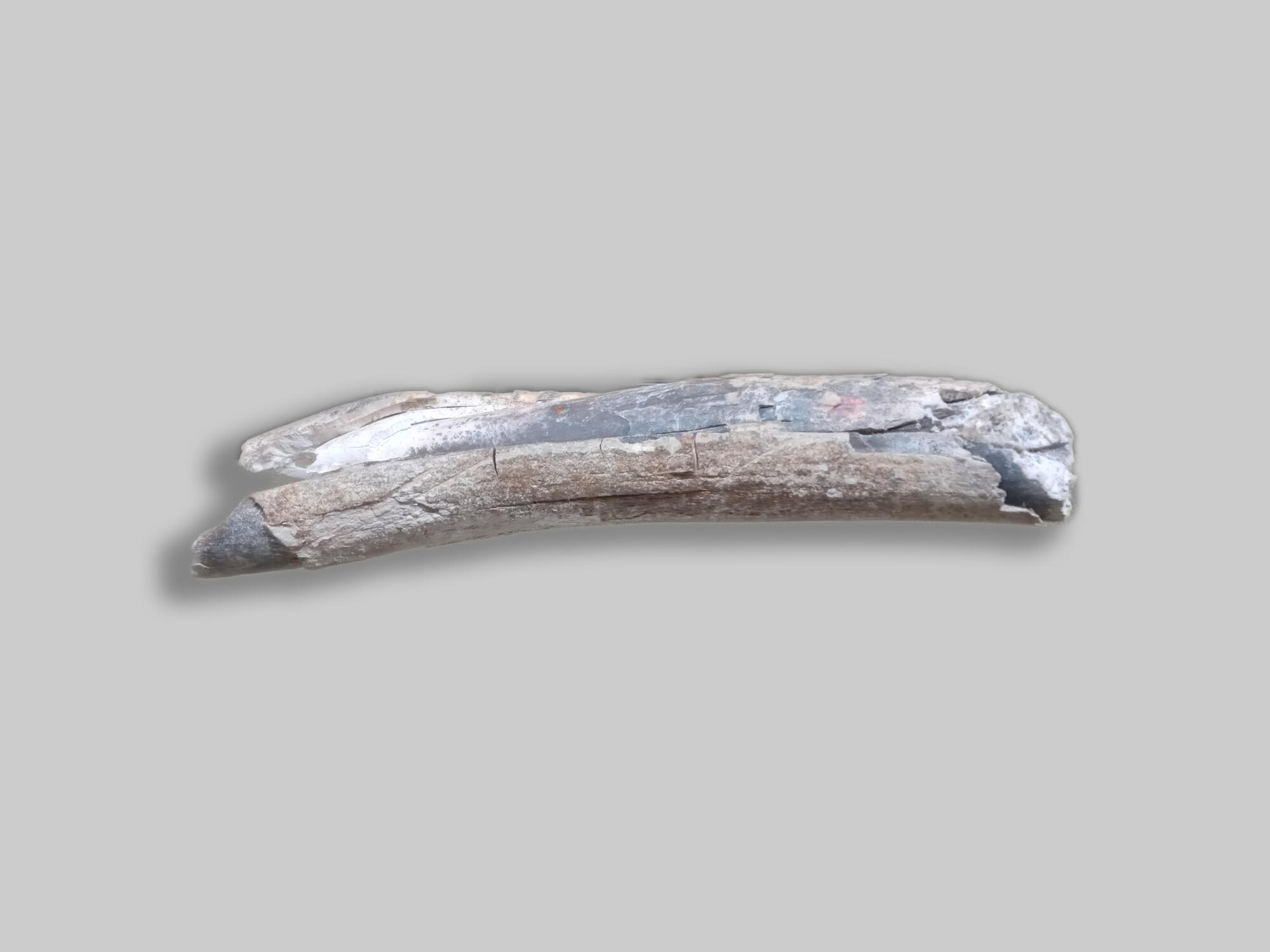The exposition of the museum of history and local lore includes a fragment of a mammoth tusk. It was not possible to accurately date the bone; the range of dates is from 300,000 to 2,000 BC.
A mammoth tusk is a series of dentine cones, that is, cones composed of hard tooth tissue stacked on top of one another. The tusks had no enamel coating, so their surface was not particularly hard, and they quickly grinded off during usage. The tusks grew in length and width throughout the mammoth’s life. By the number of tusks found during the excavation, scientists can roughly calculate the number of mammoths and suggest reasons for their extinction.
The size of the tusks varies greatly. The largest tusks of early mammoths could reach 4.5 m with a diameter at the exit of the alveoli up to 20 cm. Their weight could reach 110-120 kg.
Based on the study of mammoth remains, analysis of primitive people’s drawings and sculptures and comparison of these data with the climatic conditions in which they lived, the researchers describe in detail not only the appearance of mammoths. Comparison with modern elephants, including how they eat, makes it possible to better understand some of the structural features of the mammoth body and its individual parts.
Researchers pay special attention to the structure of mammoth tusks and their purpose. Although there are some differences between mammoths and modern elephants, scientists find many similarities. Mammoth tusks are not overdeveloped canines, but the middle pair of incisors. Newborn mammoths already had small milk tusks, up to 3-4 centimeters, which were replaced by permanent ones when they were one year old.
Elephant use their tusks to pull out underground plant parts, peel off tree bark, and uproot small trees. The ends of elephants' tusks are worn away by use and grow constantly, by about 1 cm a month. The strong curvature of the tusks of an adult mammoth should have made it difficult or impossible to do the above. However, they have abrasion zones from a young age that indicate heavy use. These zones are located differently than those of modern elephants: only on the outside of the tusks. It has been suggested that with the help of tusks, mammoths raked snow and dug out food from under it, tore off the bark from trees, and in cold times without snow they broke pieces of ice to quench their thirst.
Mammoth tusks have long been used as a material for making jewelry. They were easy to cut with chisels. Tusks were used to make figurines, chess boards and pieces, hair combs, billiard balls, as well as the handles of knives and canes. The indigenous peoples of Siberia used them to make parts for reindeer harness and buttons for clothing. Mammoth ivory is indispensable in electronics as well, especially in the assembly of radio relay devices.
A mammoth tusk is a series of dentine cones, that is, cones composed of hard tooth tissue stacked on top of one another. The tusks had no enamel coating, so their surface was not particularly hard, and they quickly grinded off during usage. The tusks grew in length and width throughout the mammoth’s life. By the number of tusks found during the excavation, scientists can roughly calculate the number of mammoths and suggest reasons for their extinction.
The size of the tusks varies greatly. The largest tusks of early mammoths could reach 4.5 m with a diameter at the exit of the alveoli up to 20 cm. Their weight could reach 110-120 kg.
Based on the study of mammoth remains, analysis of primitive people’s drawings and sculptures and comparison of these data with the climatic conditions in which they lived, the researchers describe in detail not only the appearance of mammoths. Comparison with modern elephants, including how they eat, makes it possible to better understand some of the structural features of the mammoth body and its individual parts.
Researchers pay special attention to the structure of mammoth tusks and their purpose. Although there are some differences between mammoths and modern elephants, scientists find many similarities. Mammoth tusks are not overdeveloped canines, but the middle pair of incisors. Newborn mammoths already had small milk tusks, up to 3-4 centimeters, which were replaced by permanent ones when they were one year old.
Elephant use their tusks to pull out underground plant parts, peel off tree bark, and uproot small trees. The ends of elephants' tusks are worn away by use and grow constantly, by about 1 cm a month. The strong curvature of the tusks of an adult mammoth should have made it difficult or impossible to do the above. However, they have abrasion zones from a young age that indicate heavy use. These zones are located differently than those of modern elephants: only on the outside of the tusks. It has been suggested that with the help of tusks, mammoths raked snow and dug out food from under it, tore off the bark from trees, and in cold times without snow they broke pieces of ice to quench their thirst.
Mammoth tusks have long been used as a material for making jewelry. They were easy to cut with chisels. Tusks were used to make figurines, chess boards and pieces, hair combs, billiard balls, as well as the handles of knives and canes. The indigenous peoples of Siberia used them to make parts for reindeer harness and buttons for clothing. Mammoth ivory is indispensable in electronics as well, especially in the assembly of radio relay devices.



